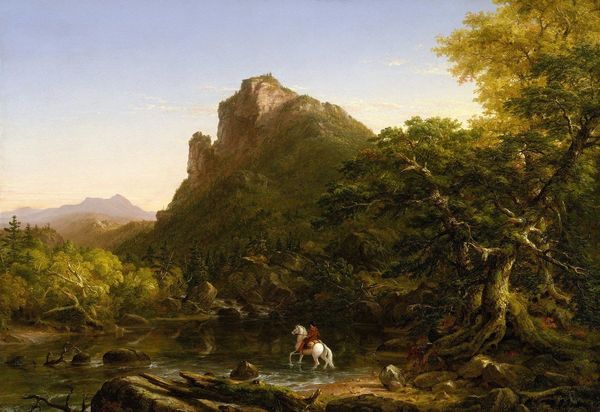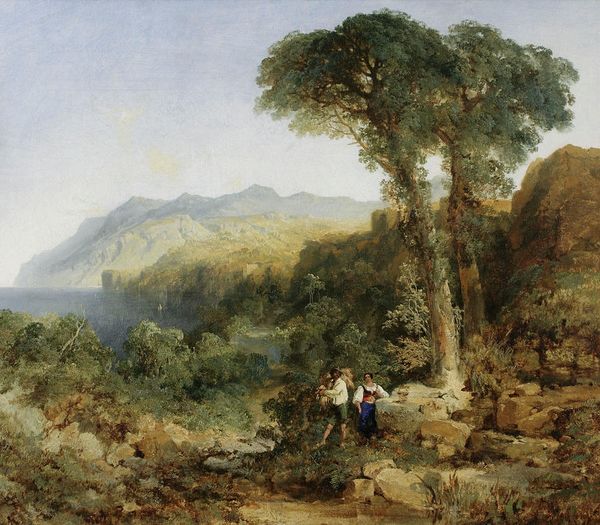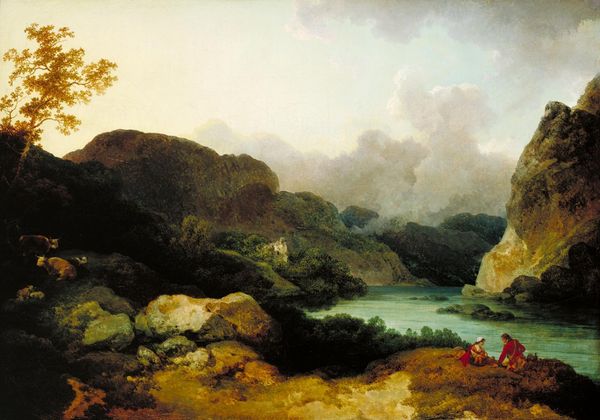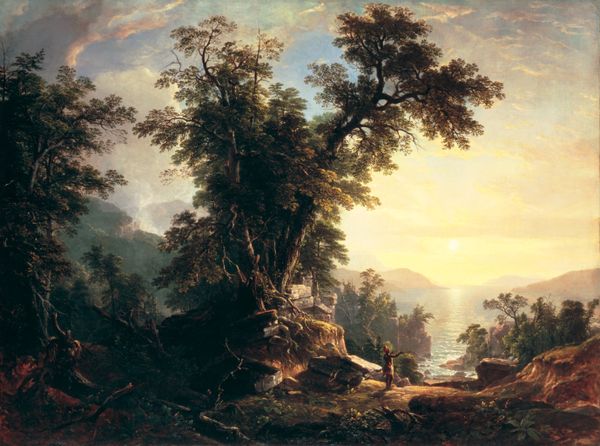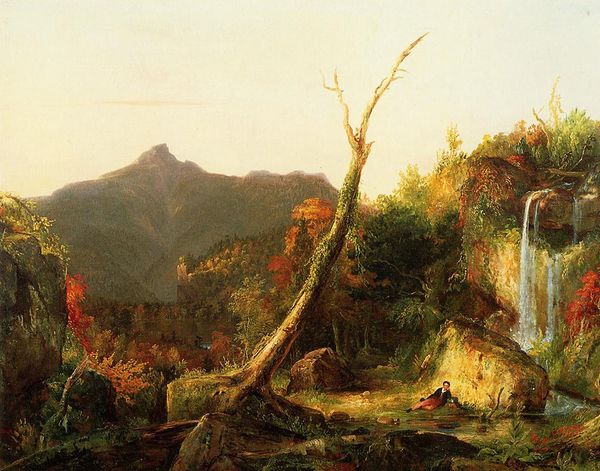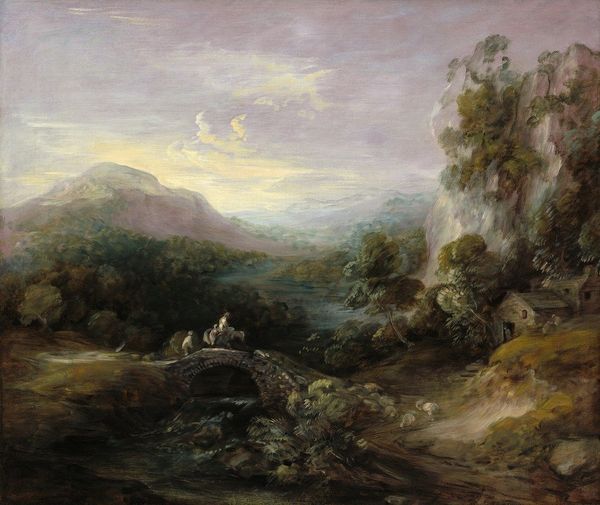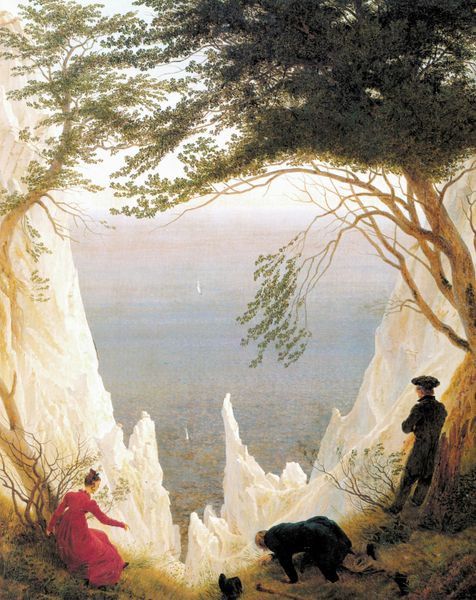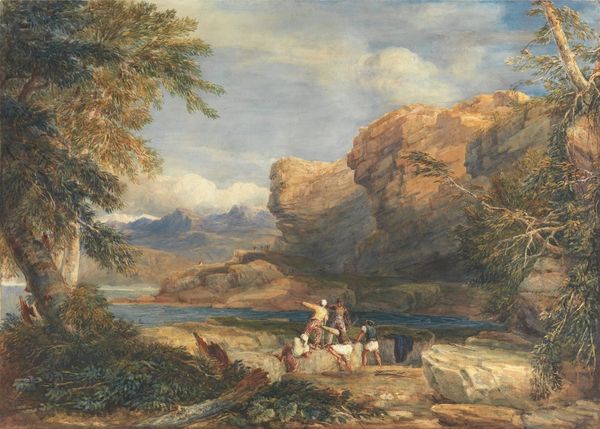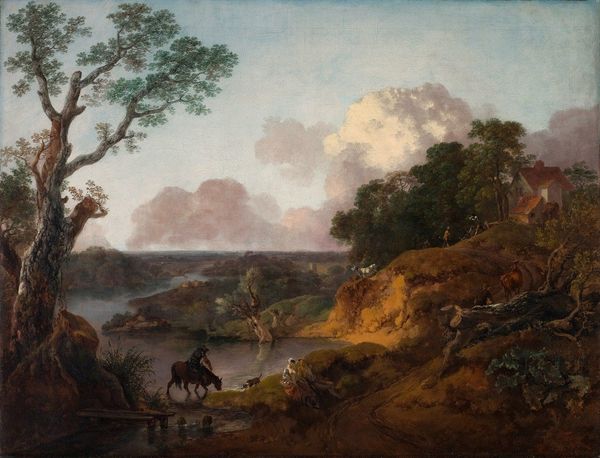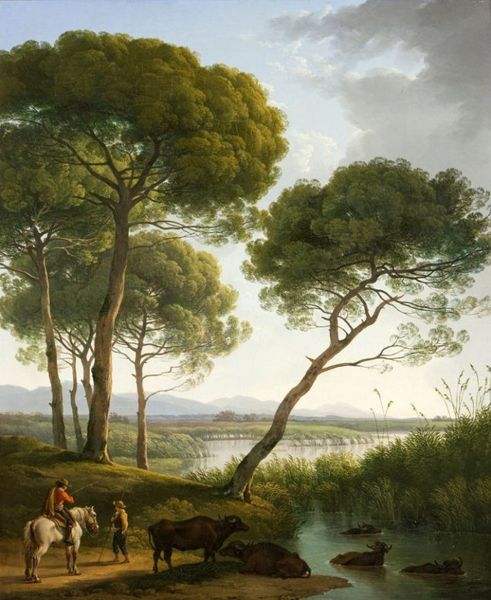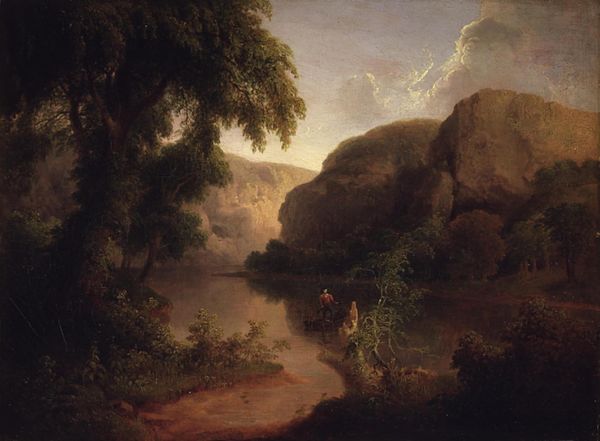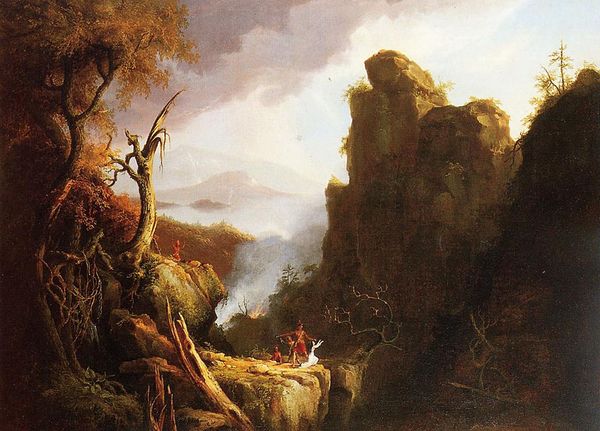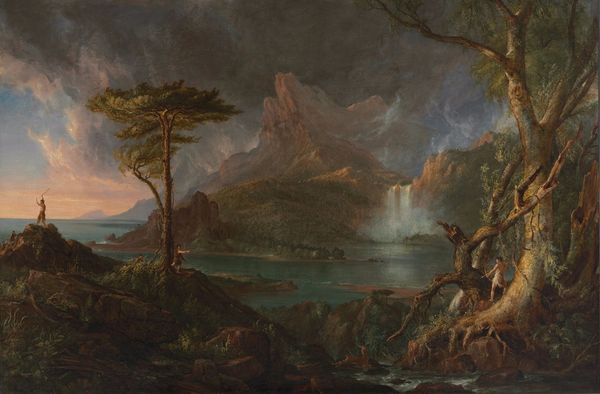
plein-air, oil-paint
#
sky
#
plein-air
#
oil-paint
#
landscape
#
figuration
#
romanticism
#
hudson-river-school
#
history-painting
#
realism
Copyright: Public domain
Editor: So this is James Hamilton's "Scene on the Hudson (Rip Van Winkle)," painted around 1845, and made with oil on canvas. The framing cave feels very dramatic, like we're peeking into a secret world. What catches your eye about it? Curator: What I find interesting is the context of production for these Hudson River School paintings. Think about it: oil paint becoming readily available in tubes at this time. "Plein-air" painting becomes fashionable. The materials directly influenced a change in subject matter, didn’t they? Editor: Absolutely, I can see how the accessibility of materials encouraged landscape painting. Curator: Consider also how the materials are used. The detailed brushwork, the layering of paint to achieve that hazy atmospheric perspective - all require skill, labor. It elevates the act of observing nature into something... commercially viable, don't you think? Editor: I never really thought about landscape painting from the labor and commercial point of view, that’s fascinating! But, by depicting scenes like this and imbuing them with narrative – Rip Van Winkle, for instance – are they not also catering to a certain ideal of American identity? Curator: Precisely! The consumable landscape reinforced a cultural narrative, using available technology and materials. What do you think a contemporary artist might do with the same scene today? Editor: I guess with today’s technological advancements and emphasis on mass production they would make it a digitized, shareable landscape, ready for consumption on social media, with readily available tools! Curator: Exactly. It’s a constant evolution driven by the means available. This has been very enlightening.
Comments
No comments
Be the first to comment and join the conversation on the ultimate creative platform.

